Idea by
Alexander Auris
Call for ideas 2021
Paths of Cajamarquilla
Paths of Cajamarquilla
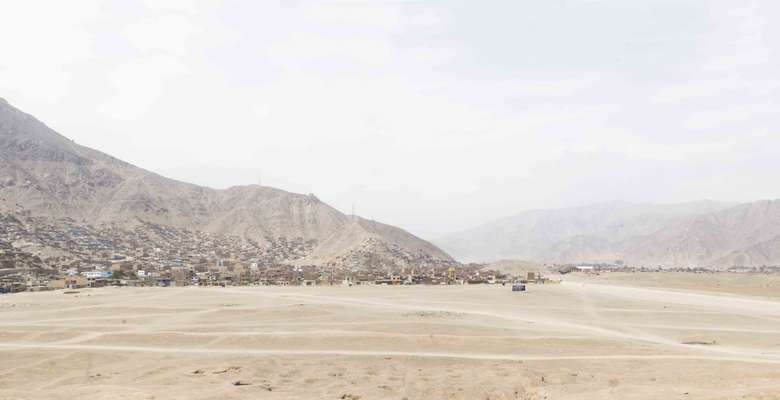
- Site-specific cases
As the speed of urbanization increases so does the number of heritage sites that are being incorporated within the urban fabric. Attempts to protect the sites ban the people living near it from its use as the preservation of these spaces often happens by a full closure of its borders. The wider consequences for urban space and people and the effect on the urban dynamics are often neglected. These tensions between urban development, preservation of archaeological heritage, and the everyday life of urbanites deserve our attention. The research focuses on this paradoxical relationship.
The research developes in Cajamarquilla, a 167 Ha open border archaeological site in Lima, Peru. The analysis of the site presents it as an example for a new approach to public archaeology, tactics to appropriate and participate in these spaces. Heritage spaces should not be seen as voids in the city, the desertic landscape shows also the possibility for a contemporary integration into the urban fabric.
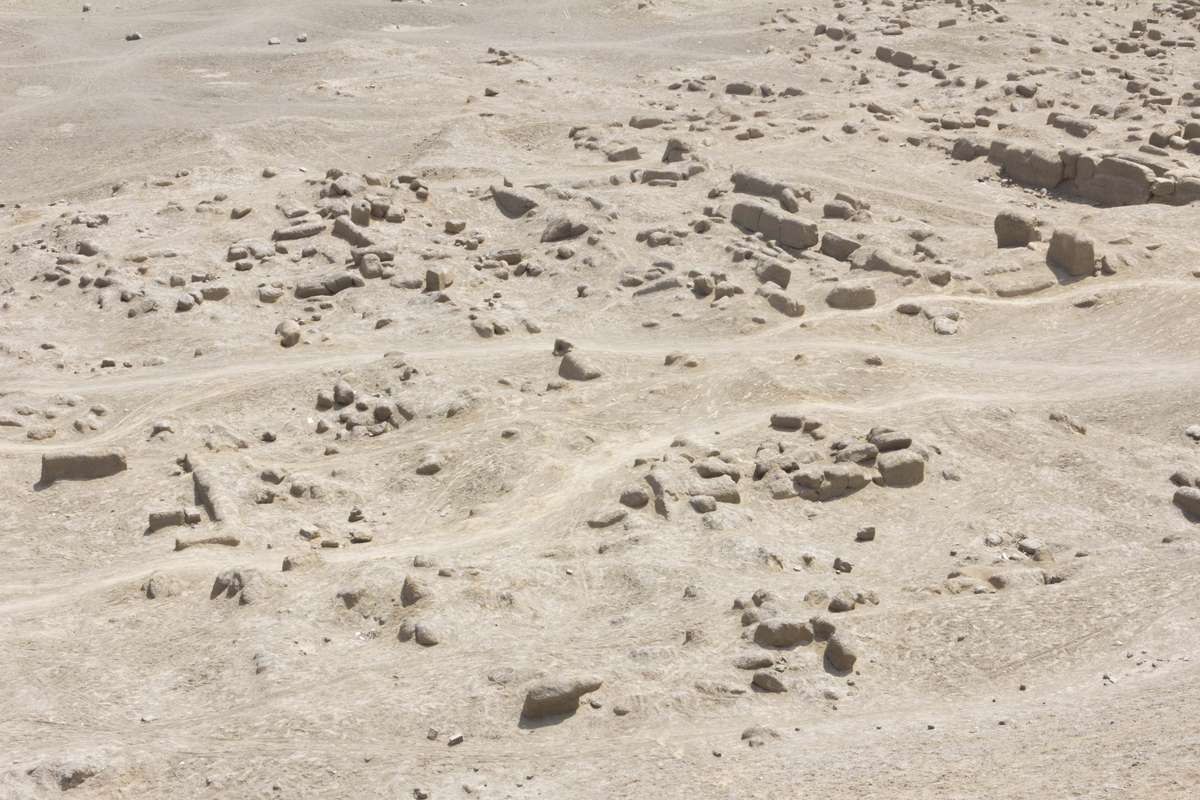
Paths of Cajamarquilla
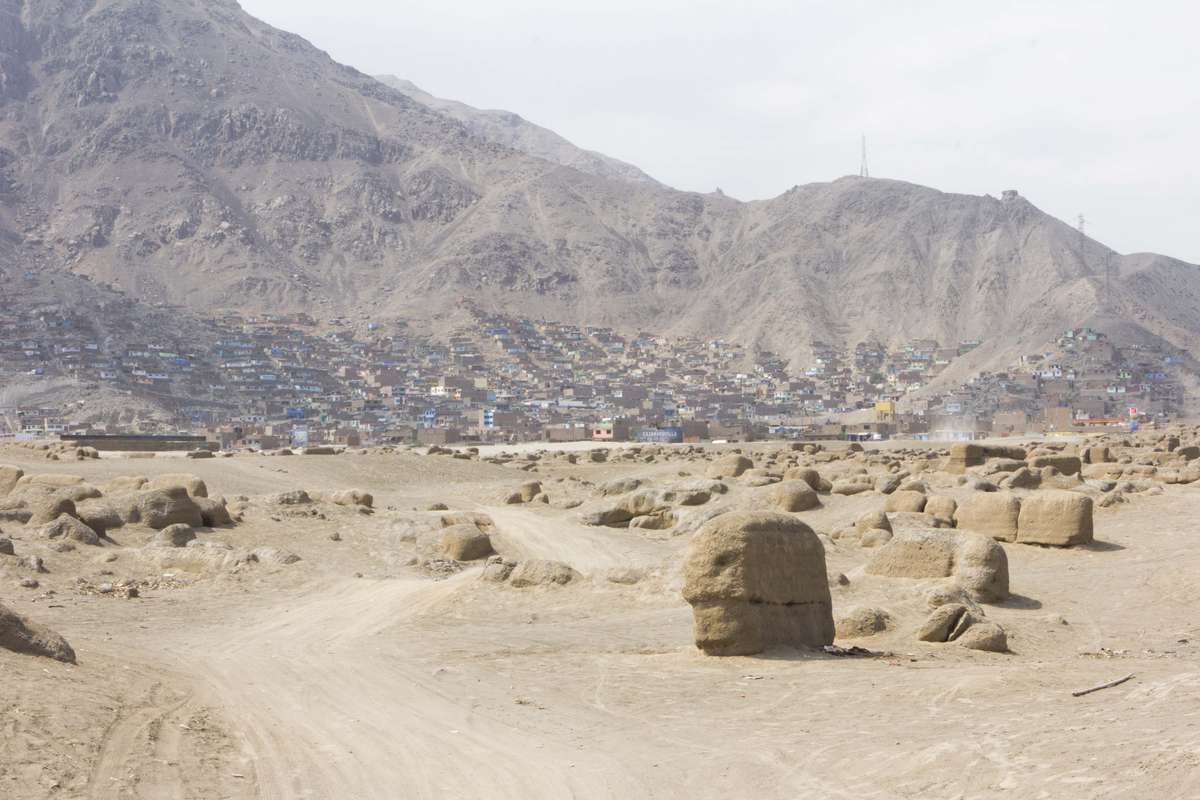
Erosion in the landscape as a consequence of the circulation of people who cross Cajamarquilla.

Occupation of the bordes of Cajamarquilla
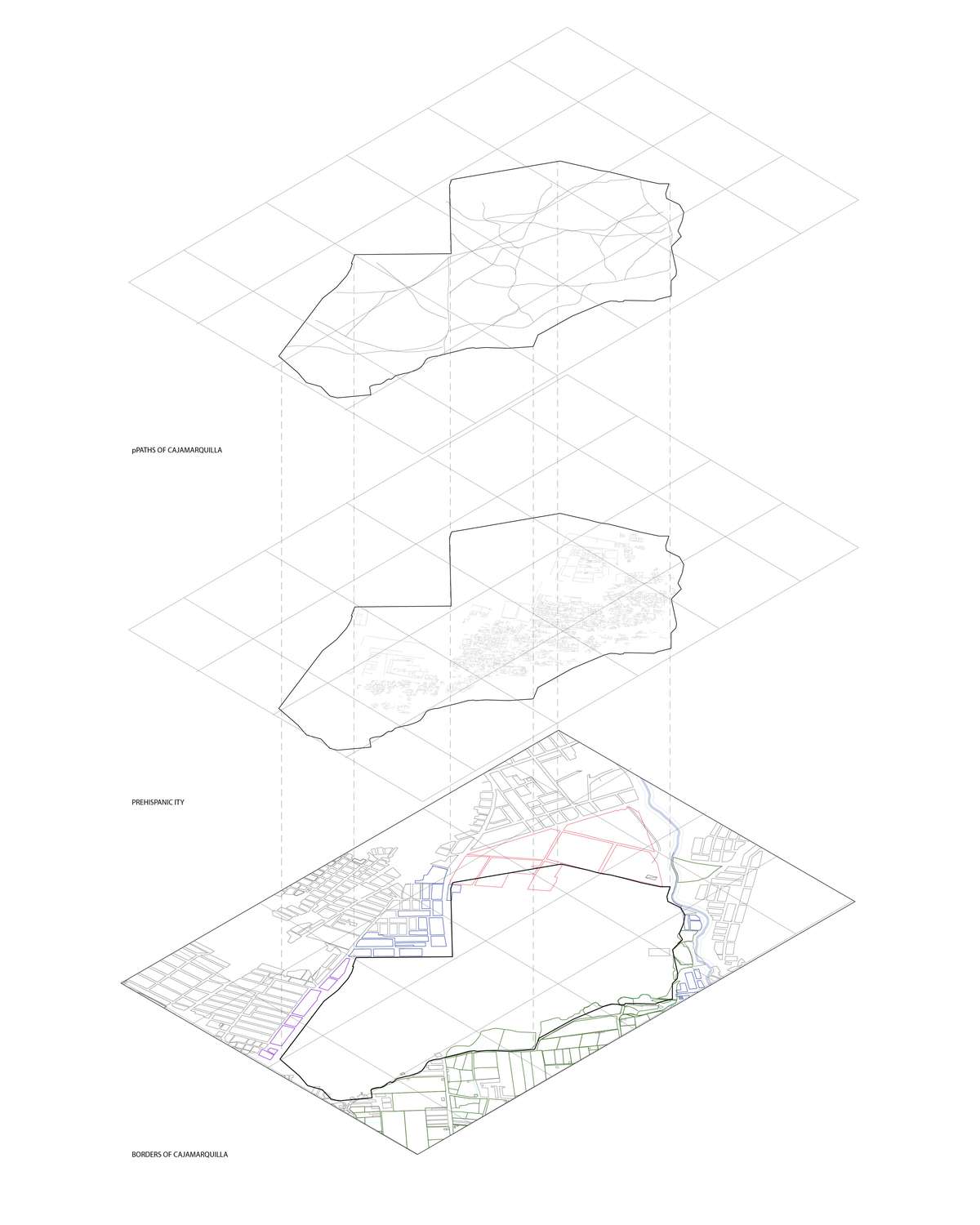
Layers of occupation of the site: prehispanic and contemporary.
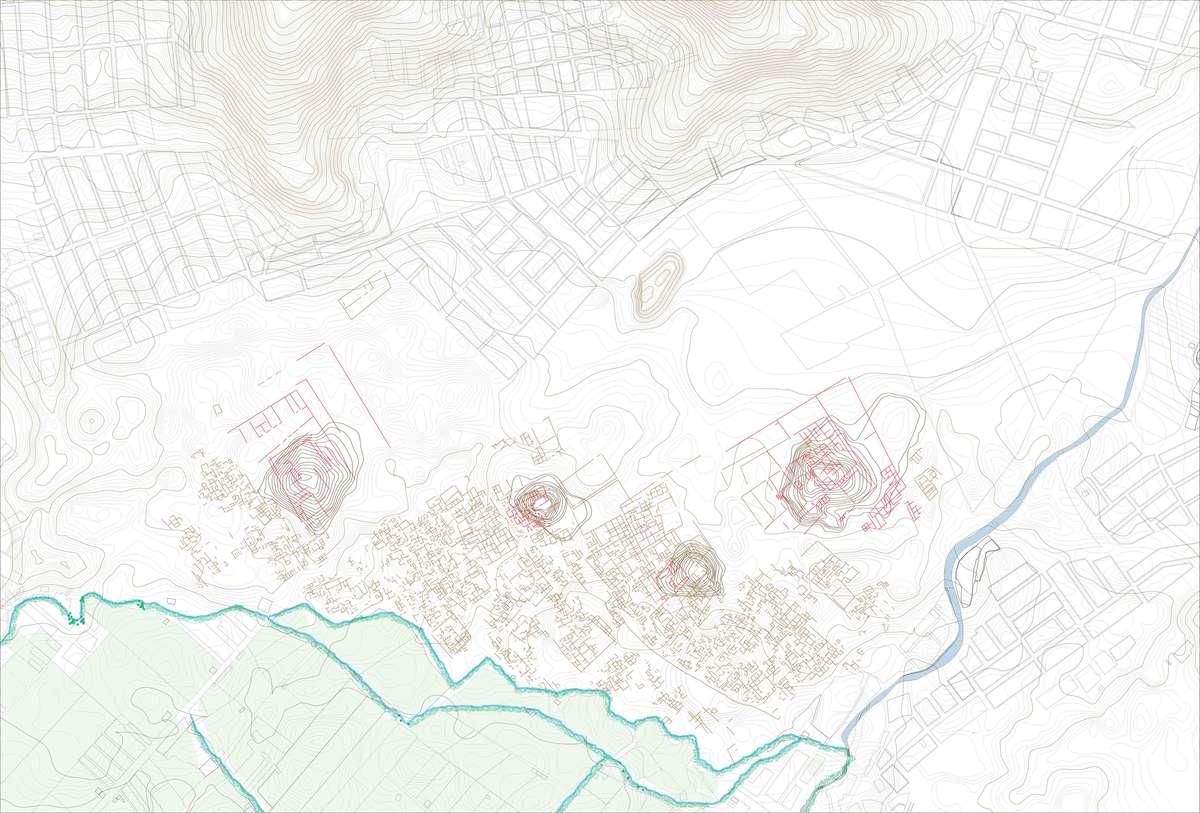
Plan of the archaeological site of Cajamarquilla
Paths of Cajamarquilla
Paths of Cajamarquilla

- Site-specific cases
As the speed of urbanization increases so does the number of heritage sites that are being incorporated within the urban fabric. Attempts to protect the sites ban the people living near it from its use as the preservation of these spaces often happens by a full closure of its borders. The wider consequences for urban space and people and the effect on the urban dynamics are often neglected. These tensions between urban development, preservation of archaeological heritage, and the everyday life of urbanites deserve our attention. The research focuses on this paradoxical relationship.
The research developes in Cajamarquilla, a 167 Ha open border archaeological site in Lima, Peru. The analysis of the site presents it as an example for a new approach to public archaeology, tactics to appropriate and participate in these spaces. Heritage spaces should not be seen as voids in the city, the desertic landscape shows also the possibility for a contemporary integration into the urban fabric.
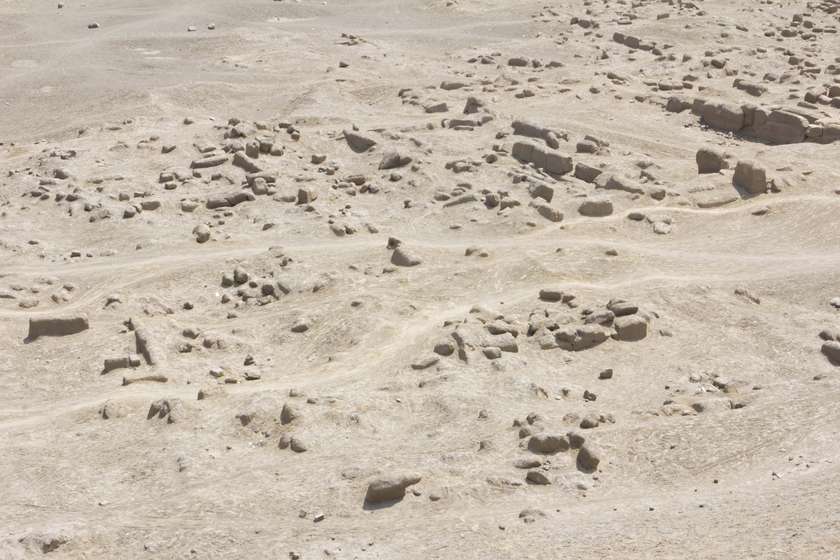
Paths of Cajamarquilla

Erosion in the landscape as a consequence of the circulation of people who cross Cajamarquilla.
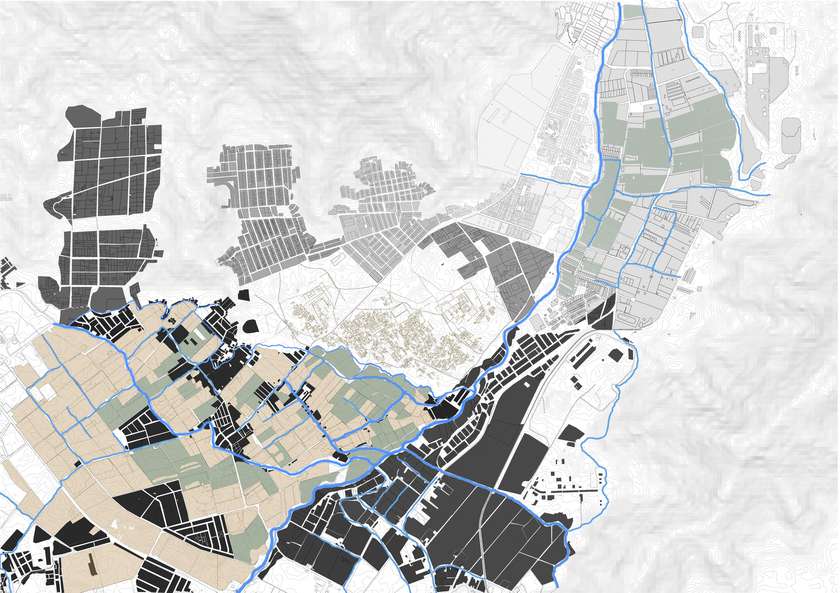
Occupation of the bordes of Cajamarquilla
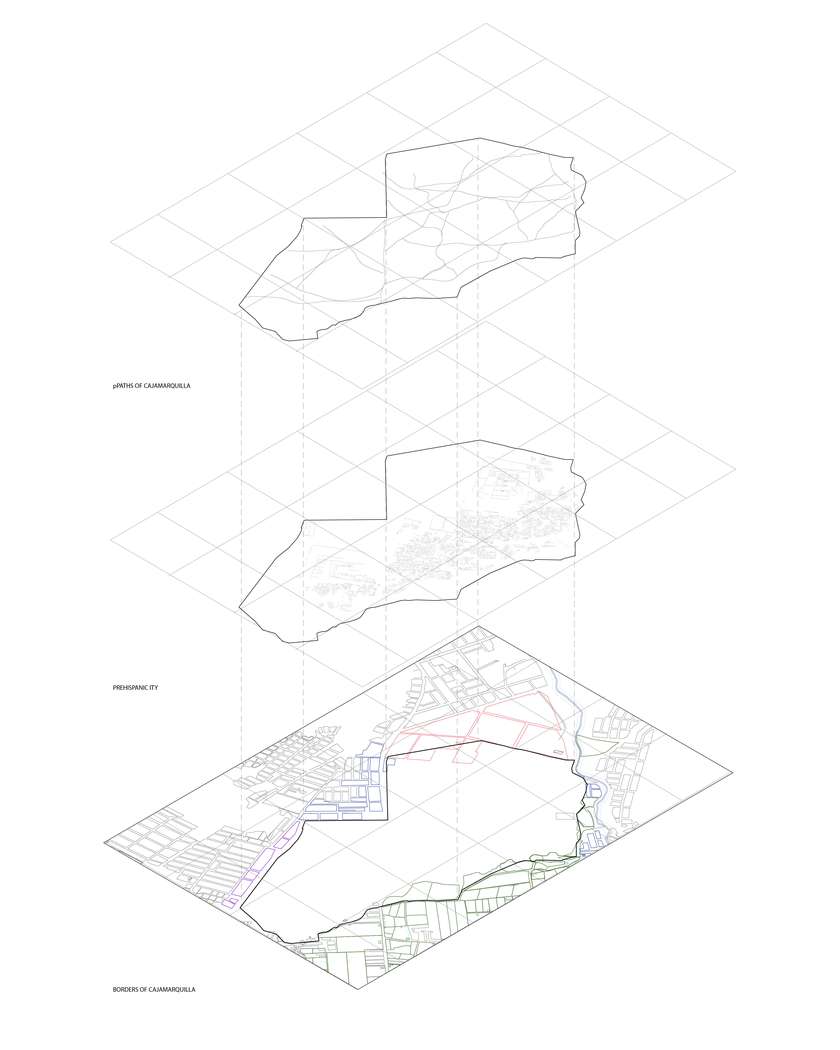
Layers of occupation of the site: prehispanic and contemporary.
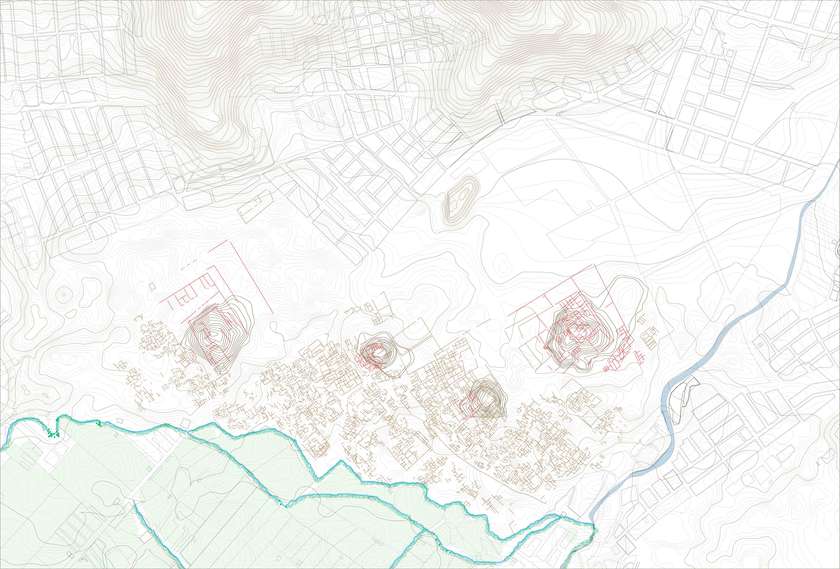
Plan of the archaeological site of Cajamarquilla